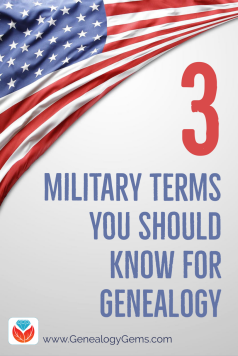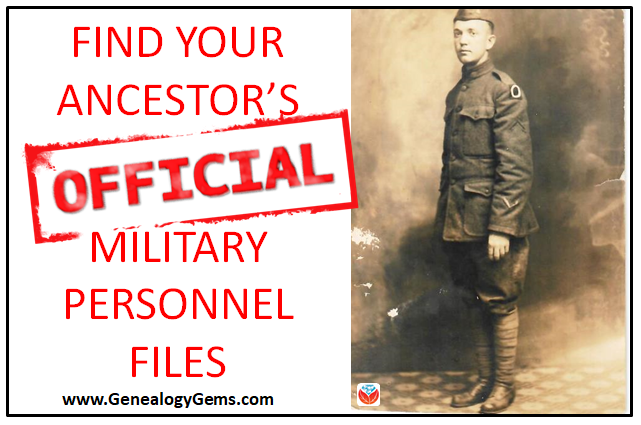Blog


Totally Free New US Genealogy Records Online
Among the totally free new US genealogy records recently put online are collections from 8 states: CA vital records and photos, GA Reconstruction oaths, IL photos, MA naturalizations, NY passenger lists, and digital newspapers from NJ, NC, NY and OH. Also: the Japanese-American experience, African American life on the West Coast and the Cumberland Gap in the Civil War.
Totally free new US genealogy records online
Check out these three important regional digital archives, followed by state-level collections of new US genealogy records from the East Coast to the West—and the South to the North.
The Japanese-American experience
The Bancroft Library at the University of California, Berkley, has published the massive Japanese American Evacuation and Resettlement Digital Archive. According to a university announcement, this new online resource “includes approximately 150,000 original items including the personal papers of internees, correspondence, extensive photograph collections, maps, artworks and audiovisual materials.” This project, together with a companion study, “form one of the premier sources of digital documentation on Japanese American Confinement found anywhere.”
You can now search over 50 newspaper titles (1887-1944) from the Hoji Shinbun Digital Collection. It’s “the world’s largest online archive of open-access, full‑image Japanese American and other overseas Japanese newspapers,” according to digital newspaper website developer Elephind. “All image content in this collection has enhancements added where possible, thus rendering the text maximally searchable. The holdings of each title are also browsable by date, with each title cross searchable with other titles on the platform. This collection is planned to contain some sixty newspapers published in Hawaii and North America. Most publications present a mix of content in Japanese and English, with formats and the proportionality of Japanese/English often changing as a reflection of shifting business and social circumstances.”
African Americans on the West Coast
The Official California Negro Directory and Classified Buyers Guide for 1942-43 is now available for free on Internet Archive. According to this news article, it “contains residential and business listings for California, Oregon and Washington. The 1942 directory includes ads for both black-owned businesses and white-owned businesses that accepted black trade, similar to The Negro Motorist Green Book, a travel guide issued for more than 30 years to help African-Americans find hotels and restaurants that would accommodate them during a time of rigid segregation.”
The Civil War in the Cumberland Gap
The Abraham Lincoln Library and Museum in Harrogate, TN houses the valuable Cumberland Gap Byrnes Collection. According to the site, “The Cumberland Gap was a strategic location during the American Civil War and changed hands several times throughout the course of the conflict. The collection includes correspondence, cartes-de-visite, and artifacts from soldiers belonging to the 16th, 42nd, and 185th Ohio Volunteer Infantry, units that were stationed for a time in and around the Cumberland Gap area.” The collection is being digitized and uploaded to a free digital archive on an ongoing basis.
Free new US genealogy records online: State collections
California. The free genealogy giant FamilySearch.org has added over 667,000 indexed names to its existing collection of California, County Birth and Death Records, 1800-1994. According to the collection description, “Registers, records and certificates of county birth and death records acquired from county courthouses. This collection contains some delayed birth records, as well. Some city and towns records are also included. Records have not been acquired for Contra Costa, Imperial, Kern, Kings, Modoc, Napa, San Francisco, San Mateo, Siskiyou, Solano, Tulare and Ventura counties. The name index for death records covers Stockton, Lodi and Manteca cities and San Benito and San Joaquin counties.”
The new Sonoma County Fires Community Memory Map is a new crowd-sourced digital archive that has come after a fast-moving wildfire burned over 100,000 acres of land across the county. According to the site, it “serves to provide a central place where people can share photographs and stories of the places that we lost overnight. Through the power of community, we aim to reconstruct a digital collective memory. Residents and visitors of beautiful Sonoma County can share their recollections of the places we no longer have.” Here’s a moving article about the story behind the site’s creation.
Georgia. A new post-Civil War record index has been published at FamilySearch.org. So far, Georgia, Reconstruction Registration Oath Books, 1867-1868 includes nearly 175,000 names. “Registration Oath Books [were] created by U.S. military officials stationed in Georgia following the Civil War,” explains the collection description. “Registers typically contain each voter’s name, county of residence, date of registration, race, and an oath of allegiance to the United States. The oath of allegiance was required in order to register. Registered voters would then elect delegates to the state’s constitutional convention.” Don’t forget to use your free guest login at FamilySearch.org for the maximum level of online access to records. Click here to learn more about this.
Illinois. About 1,700 digital images depicting the history of Rockford (Winnebago County), Illinois have been published in the Midway Village Museum’s Online Collections. According to the site, the images include: “postcards and photographs of central Rockford, Camp Grant, and local landmarks and businesses; photographs of community activities in the late 1800s and early 1900s; letters home from Rockford boys fighting in the Civil War; [and] transcripts from interviews done in 2007 with immigrants to Rockford and their children.”
Massachusetts. FamilySearch.org has published a new collection of early 20th-century naturalization records. Massachusetts, Naturalization Records, 1906-1917. Over 71,000 digitized record images are browseable on the site. Nearly 100,000 names have been indexed to date (more names will be added as they are indexed). These records are from petitions and records of naturalizations of the U.S. District and Circuit of Massachusetts.
New Jersey. Digital historical newspapers from New Jersey are finally being added to Library of Congress website, Chronicling America. Only one paper, the Perth Amboy Evening News, has been published on the site so far, but more are coming. “Upon the project’s completion, 100,000 pages of New Jersey newspapers will be available through the site,” states this news article.
New York. Over 1.6 million names have been added to FamilySearch.org’s free collection, New York Book Indexes to Passenger Lists, 1906-1942. This collection will continue to grow as more names from its 748,000 digital page images are indexed. You may browse unindexed pages: the indexes are grouped by shipping line and arranged chronologically by date of arrival.
Also, the Hudson River Valley Heritage Historical Newspapers project has now published issues from 34 newspaper titles dating from 1831 to 2013. Counties covered include Dutchess, Orange, Rockland, Ulster and Westchester. According to the site, “This collection contains 28,946 issues comprising 300,793 pages and 1,017,782 articles.”
North Carolina. The Digital North Carolina Heritage Center has added more newspapers to its free website:
- The entire run of the Brevard News, a Transylvania County, NC newspaper. According to the site, “Previously, issues of the Brevard News only covered from 1917 to 1923, but DigitalNC now includes January 1924 through December 1932….It joins fellow Transylvania county newspapers the Sylvan Valley News, The Echo, and The Transylvania Times.”
- 16 Wilmington newspapers spanning 1803-1901, including the Wilmington Daily Record. According to a blog announcement, “Some of the papers have several years of content available and several have just an issue or two. But together, they paint a rich picture of what life in Wilmington looked like during the 1800s and the wide variety of political viewpoints that were held in the city, and North Carolina as a whole. The papers shed light on a port town that was instrumental in the Civil War and in the politics of Reconstruction afterwards, which culminated in the infamous riots of 1898.”
- More issues of a Warsaw, NC newspaper, The Duplin Times. The years 1962-1985 have been added to a collection for this title dating back to 1935. The paper covers primarily local politics and community issues and events.
Ohio. The public library system in Gallipolis (Gallia County), Ohio has put its entire local historical newspaper collection online. The collection spans 123 years of news (since 1895) and includes Daily Times, Sunday Times-Sentinel, The Gallipolis Daily Tribune and others. The digital publication of issues of some newspapers through 2017 is unusual and required the publisher’s permission. Access these at the Digital Archives of the Bossard Memorial Library.
Not free but still fabulous: 110 million more newspaper pages
Newspapers.com recently sent out a “Year in review” statement that is worth passing along. They report that in 2017, the site added nearly 1,400 new newspaper titles. “With an average of 9,203,918 pages added per month, Newspapers.com added 110,447,021 pages’ worth of new content last year!”
Additions in 2017 span 41 U.S. states, Washington D.C., the UK, and Canada. They added the most newspaper titles for Alabama (265), Kansas (187), Arkansas (151), Mississippi (126) and Utah (91). Breaking it down by the number of pages added, though, you can see they added substantial content for other states, too—with Utah making both lists:
- Florida: 11,579,543 new pages
- Indiana: 3,830,015 new pages
- New York: 2,047,831 new pages
- Pennsylvania: 4,827,196 new pages
- Utah: 1,174,417 new pages
Newspapers.com now claims over 338 million total pages of newspaper content. If it’s been a while since you’ve last looked around the site, it may be time to visit again and explore your ancestors’ lives in print.
Disclosure: This article contains affiliate links and Genealogy Gems will be compensated if you make a purchase after clicking on these links (at no additional cost to you). Thank you for supporting Genealogy Gems!

About the Author: Sunny Morton
Sunny is a Contributing Editor at Lisa Louise Cooke’s Genealogy Gems; her voice is often heard on the Genealogy Gems Podcast and Premium Podcasts. She’s known for her expertise on the world’s biggest family history websites (she’s the author of Genealogy Giants: Comparing the 4 Major Websites); writing personal and family histories (she also wrote Story of My Life: A Workbook for Preserving Your Legacy); and sharing her favorite reads for the Genealogy Gems Book Club.

How to Find a Missing Webpage: Quick and Easy Video Tutorial
It’s important to know how to find a missing webpage when you’re a genealogy researcher. Clues to your family history are all over the Internet, and so are must-use research tools, directories, maps and how-tos. This free 2-minute video tutorial shows you an easy solution to those frustrating “page not found” messages.
How to find a missing webpage
Recently I went looking for my favorite (free!) downloadable genealogy forms at a particular webpage on Ancestry.com. I was not happy to discover that the webpage wasn’t there any more–at least under that name. So I used a little trick that often helps me find a missing webpage. This trick works when a webpage has been renamed or put into a different place on the website (which has the effect of changing the link). Here’s a short video demonstration of how it works.
Summary: 3 Google search strategies to try
- Go to Google and paste the URL you have in to the search box. Remove the tail end of the URL, back to the original folder name. Click Enter. The new page will likely appear at the top of the results.
- If this doesn’t work, try a Google search for the name of the original webpage. This would likely be the title that was across the top of the page, if you can recall what it was.
- Finally, try a Google site search by entering site: followed by the name of the website and the keywords you want to search within that website. For example: the search site:test.lisalouisecooke.com episode 154 will search for episodes 154 from the Genealogy Gems Podcast and Genealogy Gems Premium Podcast on my website.
How to find a missing webpage that’s not online anymore
If a webpage or an entire website has actually been removed (not just moved), you’ll need to use another free search tool: the Internet Archive’s Wayback Machine. For example, the free genealogy website RootsWeb recently had some security problems and site host Ancestry.com shut it down for repair. Click here to read instructions on how to use the Wayback Machine to search for RootsWeb or other absent webpages.
Watch more tech tip videos
It’s so essential to be able to find what you need online! Boost your everyday (and genealogy) web sleuthing skills with quick, free tech tip videos on the Genealogy Gems YouTube Channel. While you’re there, check out my must-watch series of free videos on Google searching for your genealogy. Click here to visit my YouTube channel and start watching! Then hit ‘Subscribe’ at the top of the page so you can keep up with the newest tech tips for genealogy.

About the Author
Lisa Louise Cooke is the Producer and Host of the Genealogy Gems Podcast, an online genealogy audio show and app. She is the author of the books The Genealogist’s Google Toolbox, Mobile Genealogy, How to Find Your Family History in Newspapers, and the Google Earth for Genealogy video series, an international keynote speaker, and producer of the Family Tree Magazine Podcast.

Military Terminology for Genealogists: Regulars, Volunteers and Militia
Military terminology for genealogists: What’s the difference between “regulars,” “volunteers” and “militia” in your U.S. ancestors’ military service records? It matters! Researching the records of each–and what you find–may be very different. Expert Michael Strauss explains here.
Military terminology for genealogists (and why it matters)
If you’ve looked through your U.S. ancestors’ military records, you’ve likely come across terms like Regulars, Volunteers, and Militia. What do those terms mean? You’ll want to know because the records were different and so were their terms of service. Also, you may come across relatives who served in more than one capacity.
Regulars were those men who enlisted for a specific period of time as part of the standing army. These men could have enlisted during a war period or peacetime. During the colonial period, they may have been recorded with other names, as either the Continental Line or part of the Flying Camp. The latter were men who served directly under General George Washington. Look for service records of Regulars at the National Archives. (Click here for a free download: Military Service Records at the National Archives by Trevor K. Plante.)
Volunteers were men who served during wartime or any period of emergency whose service was considered to be in the interest of the Federal Government. Recorded from the Revolutionary War onward, these men at that time might also be listed early on as “Associators.” Not to be confused with militia, Volunteers were not subject to fines for non-service. Like the Regulars, records of volunteers’ service are also found at the National Archives.
(A good example of the difference between Regulars and Volunteers can be found during the Spanish American War of 1898. During the war, there was a Regular Army 1st U.S. Cavalry that served alongside the Volunteer 1st U.S. Cavalry. The latter was known as the “Rough Riders,” led by Colonel Theodore Roosevelt.)
The militia was organized initially by colonial, then state and even county governments. (Pennsylvania’s colonial militia is a great example of typical colonial militia laws, rules, and regulations, and parent organizations; click here to read an article about the Pennsylvania militia.) Militia was generally men called up for limited military duty between the ages of 17-60 as needed for the common defense. They were often required to serve for a period of time that was based on the militia laws on the books. The men were subject to fines or penalties for non-service. Records of militia are going to be found at your local or state archives. (Click here for a directory of state archives in the U.S.)
Example: He was a Volunteer and a Regular
My ancestor, Samuel Howard, served during the Civil War. Because of his age he wasn’t able to enlist until 1865, when he turned 18.
- He was first a Volunteer soldier, who served as a substitute for another man who was drafted.
- After his discharge, he enlisted in the Regular Army in 1866. He was assigned to the 13th U.S. Infantry, where he served one month before deserting at Jefferson Barracks, Missouri.
- Samuel was married in 1867 (this may have some relevance to his decision to leave the military). He lived in Pennsylvania from the end of the war until his death in 1913. He is shown here in this 1876 tintype photograph in Lebanon, PA.
Both his Volunteer and Regular Army enlistment forms are shown below. The forms look very similar, as each contains common information asked of a typical recruit. However, they are decidedly different as the one covers his Civil War service and the other his post-war service when he joined the regular Army after the men who served during the war would have been discharged.
Take-home point for you: I believe the key to finding your ancestors, whether they served in the Regulars, were Volunteers or Militiaman, is to look at not only federal records but also search your state records. The latter may be the only place you find proof of military service. Samuel Howard’s Regular Army military service, although brief, was completely unknown to me until a couple of years ago. When he applied for his Civil War pension, which was granted to him, he never mentioned his Regular army service.
And keep learning more helpful military terminology for genealogists! Click here for resources on military acronyms, abbreviations, and dictionaries from the National Archives that can help that you research exactly how your ancestors served.
More military terminology for genealogists
Researching your relatives’ military service can be fascinating, but also frustrating if you aren’t familiar with military terminology, history, and records. In the Military Minutes segment of the free Genealogy Gems Podcast, expert Michael Strauss shares gems like these that can help you explore this important part of your ancestors’ lives. Start listening to the Genealogy Gems Podcast (Michael began contributing in Episode 207) or take a quick peek at more Military Minutes segments: Michael’s explanations of Compiled Military Service Records and Official Military Personnel Files,

Michael Strauss, AG
Michael Strauss, AG is the principal owner of Genealogy Research Network and an Accredited Genealogist since 1995. He is a native of Pennsylvania and a resident of Utah and has been an avid genealogist for more than 30 years. Strauss holds a BA in History and is a United States Coast Guard veteran.

















